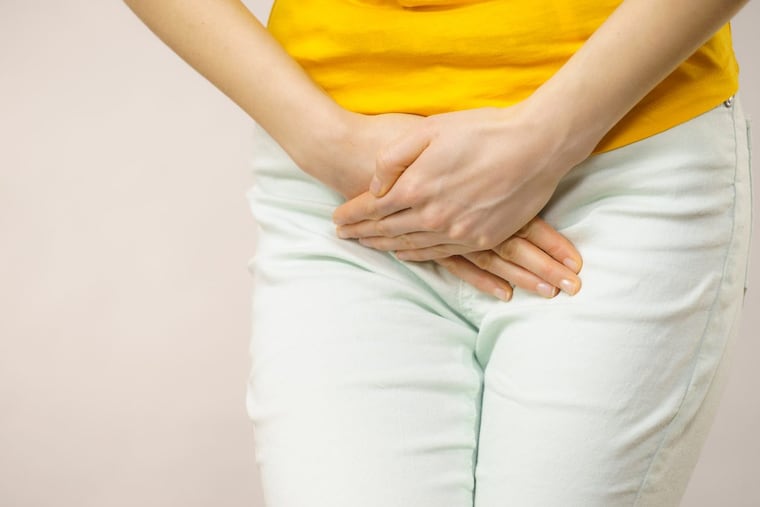Vaginal discharge in teens — is it a yeast infection or something more?
As an adolescent medicine doctor, I hear a lot about vaginal discharge. Join me as I provide some notes about Vaginal Discharge 101.

As an adolescent-medicine doctor, I hear a lot about vaginal discharge. Whad’ya know? I have a few patients here right now. Why don’t you join me as I find out what’s going on. Wait one sec while I ask parents to sit in the waiting room so we can speak confidentially.
My questions:
Discharge color?
Odor?
Itch?
Belly pain?
Burning with urination?
Have you ever been sexually active?
Patient 1: “Clear, no odor, no itch, no belly pain, no burning, never sexually active”
Our first patient has a normal vaginal discharge. I teach pediatric residents and medical students the importance of knowing what is normal in order to recognize what is abnormal. If you’re up for it, I’d like to share Vaginal Discharge 101 with you.
Vaginal discharge is a mixture of fluid, cells, and bacteria that lubricates and protects the vagina. Normal discharge is usually:
Clear, white, or off-white
Sticky
Varies in thickness during the menstrual cycle
Patient 2: “White, no odor, itchy, no belly pain, yes burning, sexually active”
Our second patient has a yeast infection. Yeast infections (candidiasis) are common. They are not STDs (sexually transmitted diseases). Small amounts of yeast are normal in the vagina, digestive tract, mouth, and on the skin. Our immune system helps keep the growth of yeast in check. Yeast may overgrow with stress, pregnancy, illnesses that affect the immune system, diabetes, and medications such as antibiotics or steroids.
Yeast infections cause an odorless thick, white discharge. Other symptoms include vaginal itching, redness, or swelling and sometimes burning with urination (dysuria). Treatment includes anti-fungal pills, creams, or vaginal suppositories. Here are ways to help avoid yeast infections:
Wear loose-fitting clothing
Wear breathable cotton underwear
Change out of sweaty clothing and bathing suits ASAP
Limit pads to menstrual period use as they increase moisture
Patient 3: “Yellow, fishy odor, not itchy, no belly pain, no burning, sexually active”
Our third patient has bacterial vaginosis (BV), a common infection. BV is not an STD, but it is more common in teens who have had sex, and increases with having more partners. BV is caused by an imbalance of vaginal bacteria. Symptoms include a white or gray thin vaginal discharge with a fishy odor that may be more noticeable during the menstrual period or after sex. Itching and burning are not common. BV is usually treated with an antibiotic taken as a tablet by mouth or as a vaginal gel. Here are ways to help prevent BV:
Don’t douche
Don’t smoke
Limit the number of sex partners
Use latex condoms
Patient 4: “Yellow/green, foul odor, no belly pain, yes burning, sexually active”
Our fourth patient has trichomoniasis (“trich”). Trich is an STD caused by a parasite. Symptoms include vaginal discharge with a fishy or foul odor, itching, redness, soreness, dysuria, and painful sex. Trich is treated with an antibiotic taken by mouth. Testing for trich should be done at least once a year. The only sure way to prevent trich is abstinence; using a latex condom can reduce the risk.
Patient 5: “Yellow, foul odor, not itchy, yes belly pain, yes burning, sexually active”
Our final patient has pelvic inflammatory disease (PID). PID is an STD involving the ovaries, fallopian tubes, and uterus. It is a polymicrobial infection, meaning it is caused by a combination of bacteria including some we routinely test for (chlamydia and gonorrhea) and some we do not. Symptoms include pelvic pain, vaginal discharge, dysuria, and irregular bleeding. PID is treated with several antibiotics at the same time. If left untreated, PID can cause:
Chronic pelvic pain
Ectopic pregnancy
Infertility
Testing for chlamydia and gonorrhea should be done at least once a year. I know I sound like a broken record, but the only sure way to prevent PID is abstinence; using a latex condom can reduce the risk.
My advice: Talk to your teen about vaginal discharge (but maybe not at the dinner table). It will probably be a little awkward, but I know you can do it. Share with you teen your notes from Vaginal Discharge 101. If you make it a casual conversation, chances are she’ll come to you if she has a problem. Actually, it’s a new day, it’s a new age — go ahead and talk about it at the dinner table.
Rima Himelstein is an adolescent-medicine specialist at Nemours Children’s Hospital in Delaware.